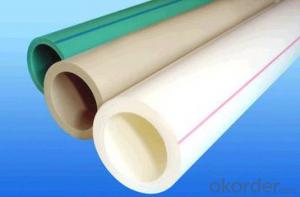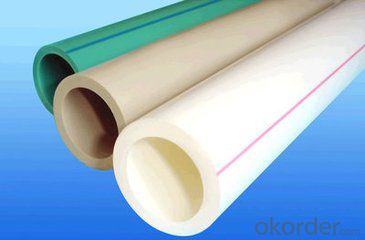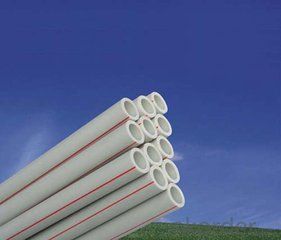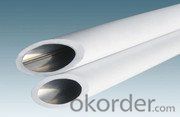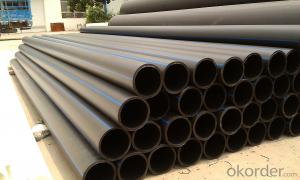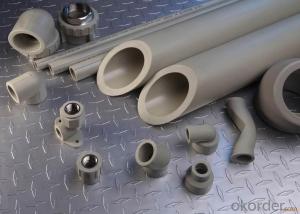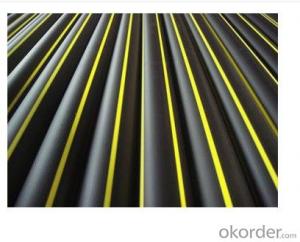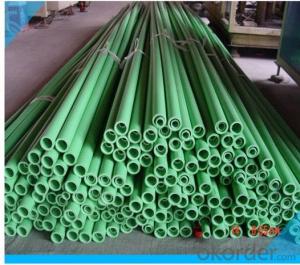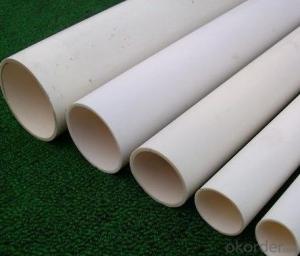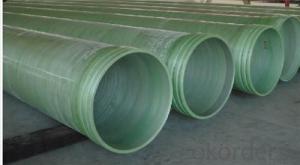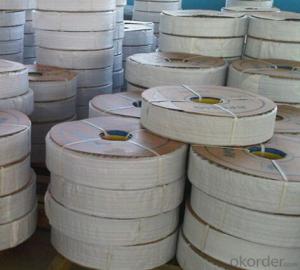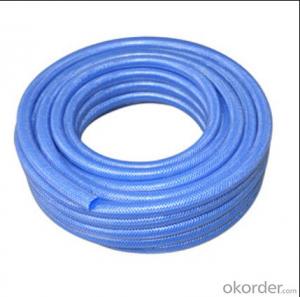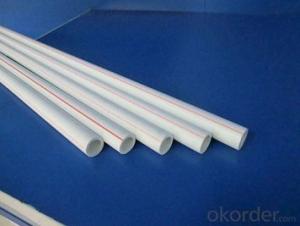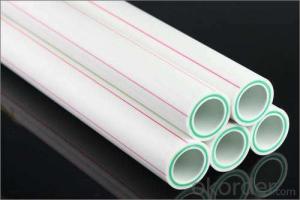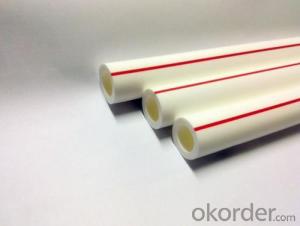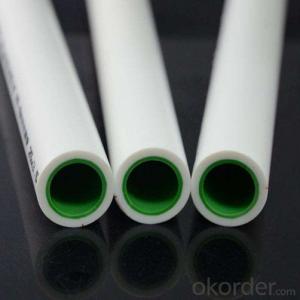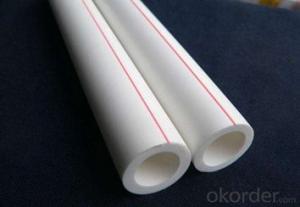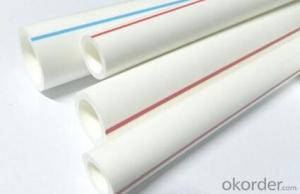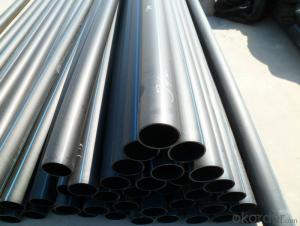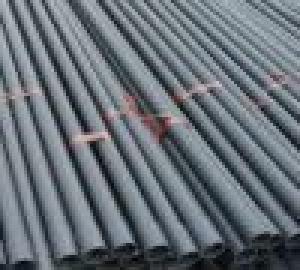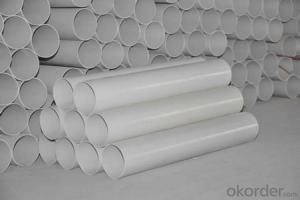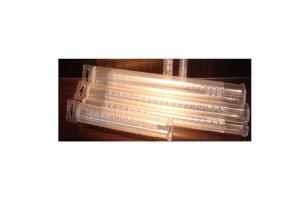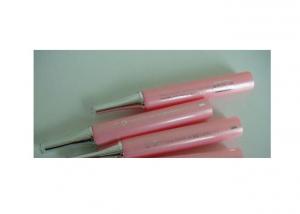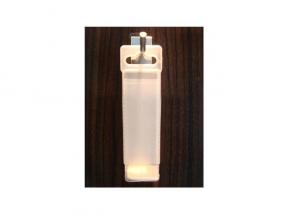Plastic Tubes - Heat Resistant PP-R Plastic Pipes for Agriculture
- Loading Port:
- China main port
- Payment Terms:
- TT OR LC
- Min Order Qty:
- 1000 m
- Supply Capability:
- 100000 m/month
OKorder Service Pledge
OKorder Financial Service
You Might Also Like
Quick Details
Material: PP-R, PPR
Technics: injection
Type: pipe
Place of Origin: China (Mainland)
Model Number: 20-110MM
Connection: Welding
Shape: Equal
Head Code: round
Product Type: Ppr pipe
Color: white, grey, green
Item number: DSE001-DSE010
Standard: DIN 8077/8078
Length: 4 meters
Certification: ISO9001, CE
PPR Pipes Advantages:
1. Sanitization & Non-poison: This product is green building material which is able to use for pure clean drinking water pipe system. No heavy metal additives would not be covered with dirt or contaminated by bacterium.
2. High Temperature Resistance: the maximum sustained working temperature is up to 70 Degrees Celsius, the maximum transient temperature is up to 95 Degrees Celsius.
3. Corrosion-Proof & Non-Fouling: Resist chemical matters or electron chemical corrosion. Able to avoid the pipe's fouling or blocking as well as the blemish, rust on basin and bath.
4. Heat Preservation & Energy-Saving: Excellent heat insulation features, minimal thermal conductivity which is only 0.5% of the conductivity of metal pipes.
5. Less Weight & High Strength: Its proportion is only 1/8th of metal pipe’s, with pressure-proof strength up to over 5MPa(50kg/sqcm),high tenacity and impact resistance.
6. Beautiful Appearance & Higher Flow Capacity:Smooth inner and outer surfaces, less flowing resistance, soft color and beautiful figure.
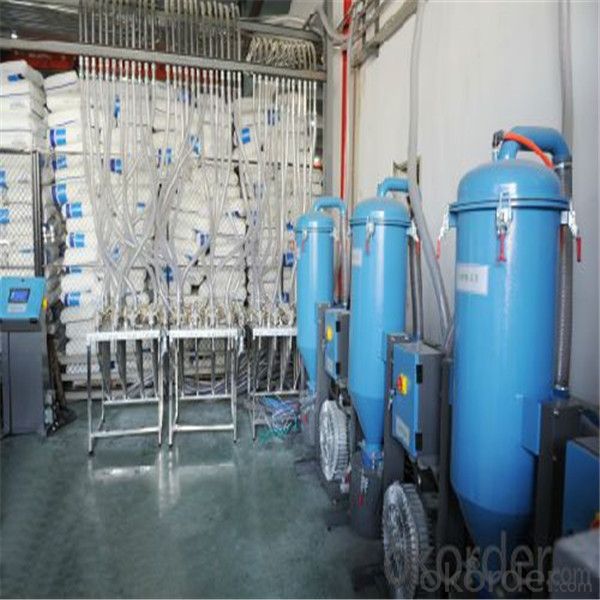
- Q: What are the cost considerations when using plastic tubes?
- Some of the cost considerations when using plastic tubes include the initial investment in purchasing the tubes, transportation costs, maintenance and repair expenses, and disposal costs. Additionally, the type and quality of plastic used can affect the price, as well as any customization or special features required. It is also important to assess the overall lifespan and durability of the tubes to determine the long-term cost effectiveness.
- Q: Can plastic tubes be used for industrial labeling?
- Yes, plastic tubes can be used for industrial labeling. They are commonly used for labeling in various industrial settings due to their durability, flexibility, and resistance to moisture, chemicals, and UV radiation. Plastic tubes provide a reliable and cost-effective solution for labeling products, equipment, and components in industrial environments.
- Q: What is a socket connection?
- The socket connection is that the pipe or pipe end is inserted into the socket of the connecting piece, and the well is sealed with the slope filling material in the annular gap.
- Q: Can plastic tubes be used for storing personal hygiene items?
- Yes, plastic tubes can be used for storing personal hygiene items. They are often used for packaging and storing items like toothpaste, lotions, creams, and gels. Plastic tubes provide a convenient and hygienic way to store and dispense these products.
- Q: What are the different types of plastic tubes?
- There are several different types of plastic tubes, including PVC tubes, polyethylene tubes, polycarbonate tubes, polypropylene tubes, and acrylic tubes. Each type has its own unique properties and is used for various applications such as plumbing, electrical conduits, packaging, and scientific experiments.
- Q: What are the different shapes available for plastic tubes?
- There are various shapes available for plastic tubes, including round, oval, square, rectangular, triangular, and hexagonal.
- Q: PVC flame retardant pipes have three kinds of ABC, heavy duty is not rigid flame retardant tube?
- Pipe length 4m/ root, the color is white, pure white, bending needs special bending spring. Pipe connections using special joint insertion connection, the connection with the special surface coating adhesive, sealing interface.
- Q: had to take the doors off and the plastic tube got cut. or does it just pull off? anyways is it gunna leak if we try to turn it on? when i put the door back on? i stuffed the tube from the door into the bottom hinge nipple. it's only got ice in the door not water. so that's a drain tube?
- Your ok unless u have the water dispenser in the door. when u press it the relay or valve in back will shoot water out the other broke hose not the end u plugged coming from the door. u can buy a splice or coupling for pennies. Look under there u probably just pulled the connection loose. push the two ends back together.
- Q: How do plastic tubes perform in extreme cold temperatures?
- Plastic tubes generally have poor performance in extreme cold temperatures as they are prone to becoming brittle and cracking.
- Q: Suppose I take a plastic tube and some insulated wire and wrap the wire very tightly around the plastic pipe so that the pipe is covered with several layers of wire wrap. The wire is always wrapped around the pipe in the same direction. Then we connect the two ends of the wire together. If I then drop a strong magnet down this pipe arrangement, will the magnet fall slowly, or not?
- Not slowly, but it will fall somewhat slower because of an induced current when it first enters and exits the wire covered section of the tube. In the middle section the two poles will induce opposite induction currents (and voltages), so the effect will cancel. But if what you want it to show eddy current effects, the coil arrangement is not a good way of doing the experiment. You want the resistance to be minimal so the eddy currents don't dissipate too fast. And you want the eddy currents at both poles of your magnet to be (relatively independent) and not cancel out in a series circuit. The easiest way to achieve that is to use a simple copper tube. Of course, if what the question is trying to do is to test if YOU understand the difference between the coil and the solid copper, then it might actually achieve its purpose. I bet most people will get it wrong. Good Luck with your experiment. Or your homework question. :-)
Send your message to us
Plastic Tubes - Heat Resistant PP-R Plastic Pipes for Agriculture
- Loading Port:
- China main port
- Payment Terms:
- TT OR LC
- Min Order Qty:
- 1000 m
- Supply Capability:
- 100000 m/month
OKorder Service Pledge
OKorder Financial Service
Similar products
Hot products
Hot Searches
Related keywords
